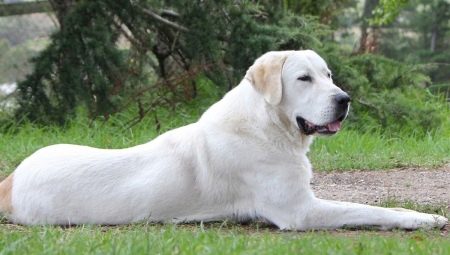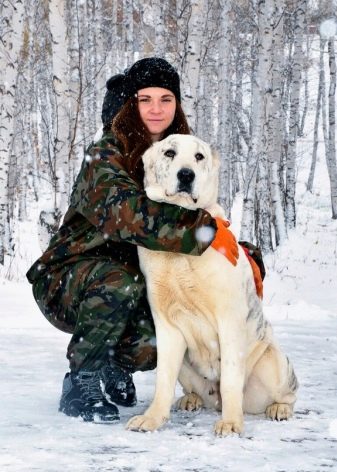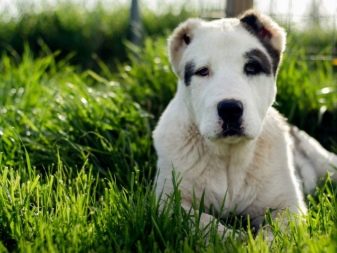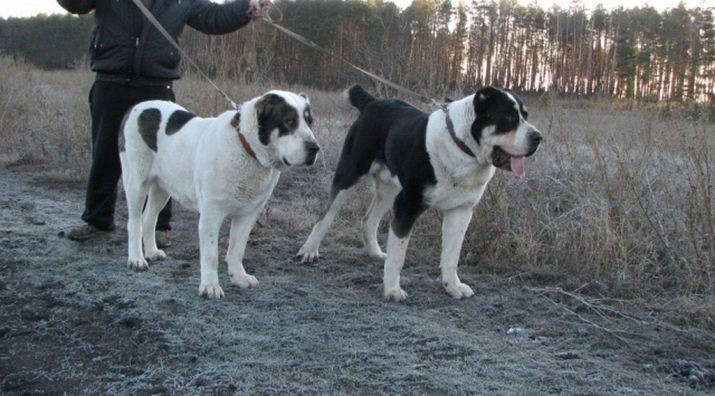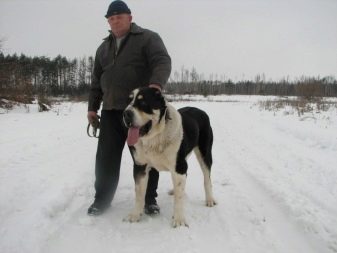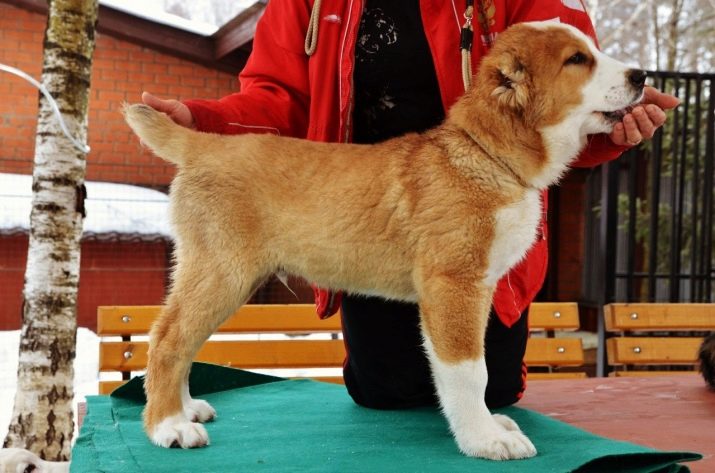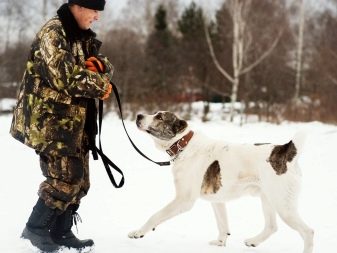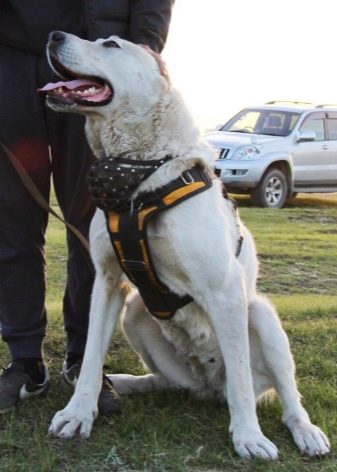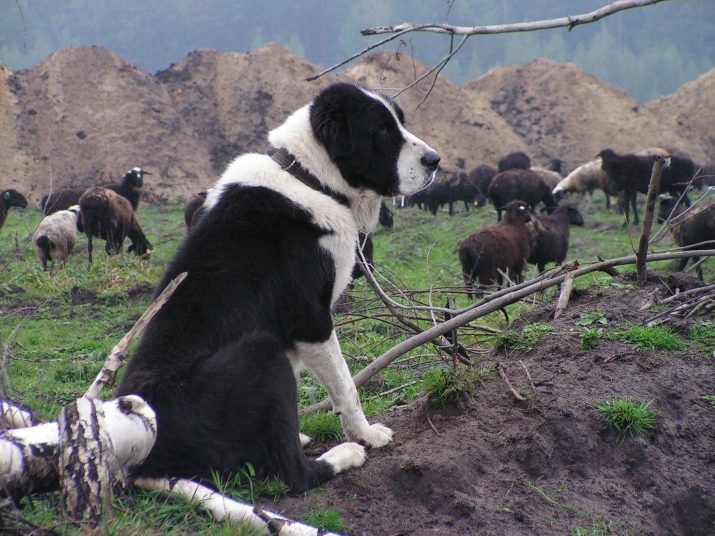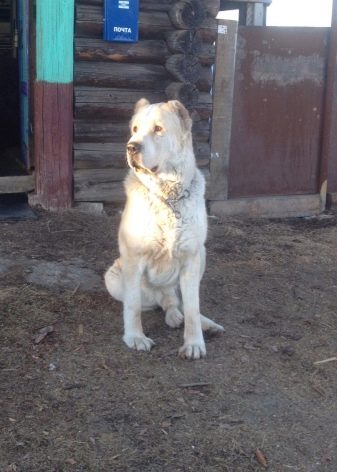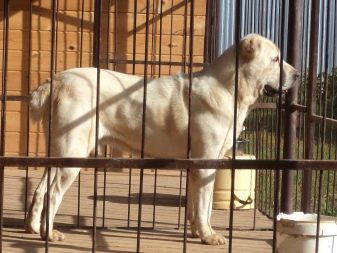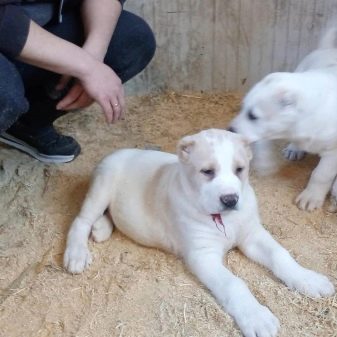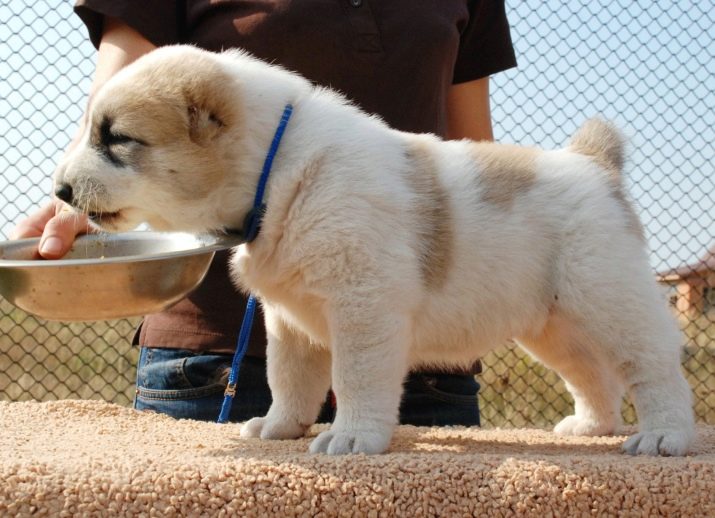Alabaya training has its own specifics and differs from the training of such large breeds as Labrador. Failing to fulfill certain conditions, it is possible not only not to achieve a result, but also to bring harm to oneself.
What is worth instill in the first place?
In order to properly raise alabay, it is necessary to take into account some features of his character. These dogs are very smart, quickly grasp new knowledge and learn new commands without any problems. However, the representatives of this breed are very independent, independent and by no means willing to obey. The success of the training depends largely on whether the owner can show strength and character and thereby curb the obstinate animal. In this case, of course, Relationships should not be built on intimidation, but on the establishment of a psychological connection between humans and animals.
Firstly the host alabaya must show his superiority over the pet and explain to him who is in charge of this tandem. Even once allowing the dog to show disobedience and without punishing it, it is easy to completely destroy the balance of power.
Cynologists, in order to avoid such a scenario, offer a very interesting strategy: from small months periodically form an unusual and not particularly comfortable environment for a puppy. For example, it can be walks in new places, a trip in public transport or a trip by car.
Unusual circumstances will introduce alabay into a state of confusion, which will give its owner the opportunity to show leadership qualities that the dog will definitely remember.
Besides, important is the psychological connection between man and animal. It is necessary that alabai trust his master, otherwise he will simply refuse to learn the commands and carry out the tasks assigned. Even showing rigor, it is important to do it without kinking - do not shout and beat the pet, but speak in a stern and confident tone or shake slightly by taking the withers. It is recommended to track and use the volume with voice timbre, and facial expressions, and gestures. Intonation during training is allowed to increase, not reaching the cries, and, conversely, reduce.
For a 6-month or 7-month-old puppy should, among other things, walk in a muzzle through the streets, adequately respond to tactile contact with the owner and not react to the fact that the owner sometimes takes his bowl.
If you ignore the last aspect, then in the future there may be problems, based on the fact that the dog will protect its food and thereby complicate the feeding process.
When to start learning teams?
Training must begin, while the puppy alabay is still small, so the age of 2 or 3 months is optimal. However, even before this age, it makes sense to start getting the dog accustomed to his nickname. In addition, before reaching the age of 3 months, alabay gets used to going to the toilet at home in the diaper. A month at 3 pets is worth starting to take for a walk, but only on a harness, which in 6 months it will be time to change to a leash.
Basic commands
The first team to study with Alabai is the use of his nickname. As soon as the puppy hears her, he must immediately approach the owner, putting aside what he was doing at that moment. No less important is the study team "Ko me."
Training should be carried out, without pulling the dog off the leash, and encouraging him every time he approaches the owner. When these two teams are mastered, it's time to move on to the “Near” team. During training, the dog should be to the left of the owner, as with a joint walk. Having voiced the command, a person must pull the leash quite energetically.
Team "A place!" It forces the dog to return to the scene, no matter what happens. Experts recommend to master this team as early as 2 months old dogs. Team training "Sit!" happens with the use of sweet. Alabai must see the treat, raise his head to him, after which the host presses him lightly on the sacrum, and he sits down. As soon as the puppy copes with the task, he will get a snack.
Team training "Lie down!" carried out in a similar way. After completing the task, the Alabai must be in the prone position, but with a straight body. To teach alabaya requirement "Stand!", recommended to use the method of coercion. The owner will have to either tighten the leash, or slightly raise the dog, holding it in the abdomen. If alabay cope with the task, he will receive a reward.
Team "No!" does not allow the dog to do something bad. To prevent it, simply pull it off the leash. Finally, the team is equally important. "Walk!"used in combination with a long leash.
Methods and schemes
Training alabay at home occurs using three main methods: coercion, promotion and prohibition. If the team is successful, the dog will have to be rewarded with something tasty or praise. With this method it is important not to overdo it, otherwise the dog will lose motivation. Coercion should be used if the pet refuses to follow the owner’s instructions. It can manifest itself in the form of tightening the leash or strapping, pressing on the sacrum, or slight shaking.
However, severe physical pain to cause the dog is strictly prohibited.
Prohibition also comes to the rescue when the dog needs to be stopped from some kind of action. For the successful application of this method is important sequence - in one case it is impossible to punish a puppy for something, and another time to ignore the situation. Nevertheless, experts advise even when training at home not too often to use the latter method, as alabai may lose the skill of independent decision-making.
In the case when the training of alabayev occurs for protection or work on pasture, the general management looks a little different. If the dog is to feed the sheep, then begin to prepare him for this at the age of one and a half or two months. Very important long walks with the owner for two or three hours. As soon as the Alabai begins to obey and execute commands, he will have to be taught to interact with other animals. The task of the shepherd dog is to drive away those who are lagging behind or are strongly out of the general direction of movement.
The owner or even a dog handler will have to fasten a special leash to the collar, the length of which varies from 11 to 13 meters, and then follow along with the dog to the lagging animal. Next, use the command "Go on!" and a whip click indicating the desired direction. The leash itself at this moment is weakened. While the alabai is running towards the flock, it is important to praise and repeat the command. Movement is stopped with the command "To me!". Training necessarily ends with the issuance of treats.
In order for Alabai to keep the house safe, this will have to be taught at the age of 6 months. To acquire this skill, it is better to contact a professional canine. As a result, it is important that the dog does not trust strangers, bark and chase them, be able to protect the owners, protect the territory and ideally find objects and people on the trail.
Dog training is best left to a professional, as an untrained person in such a situation may suffer.
Differences of education and training of boys and girls
In general, the Central Asian Shepherd of both sexes is trained equally. However, the dog is considered to be more aggressive and capricious; therefore, considerable strength of character and even stubbornness of the owners will be required. Besides, boys often flee, which is strictly forbidden to admit. Alabai girls are calmer, more obedient and more sensitive. Their disadvantages include the desire to wriggle out of the command, but get a treat.
Master's behavior in training
During dressing, it is important to avoid nervousness, haste, communication in high tones and fussiness. The owner should speak calmly and confidently in himself, clearly demonstrating "who is the boss here." In this case, the puppy will feel the authority of the person and will be ready to obey him. therefore not approving the position of forces, it is not necessary to proceed to the training.
Dog handlers advice
Professionals recommend that owners of alabayev practicing at home should not try to “overload” the pet and act consistently. Only having mastered one team and securing it, you can move on to the next.
You should definitely play with a puppy, but at the same time do not mix the game and training, but clearly divide the time for education, entertainment and food. Keep alabay recommended in the aviary, as it is definitely not a pet, and also not adapted to life in a booth on a chain.
By the way, despite the fact that the puppy must recognize in the person of the leader, he should also see him as a defender. This relationship is formed in the first months of communication through everyday joint walks.
If the owner is unhappy and wants to demonstrate it to the dog, then he It is recommended to use words containing the sound “p” rather than shouting instead. When a dog is trained to its nickname, the name should be pronounced while stroking the pet. It is necessary that the alabay have the right associations, and he experienced positive emotions when his name sounds. If a puppy is punished or strictly educated, the name should not be used at the moment.
It is worth adding that when alabai is brought up only for the owners, and no delivery of standards is expected, words for designating commands can be replaced by others.
Although it is recommended to use delicacies as a reward, it should be thoughtful. Otherwise, the Alabai will quickly get used to it, and the necessary effect of the promotion will disappear. If you generally talk about the puppy's food, then it should be done in a quiet and secluded corner. Before you receive a gift, the puppy must sit down and endure the required amount of time. If he starts to jump impatiently, the bowl is picked up and returned only when he calms down.
In the next video you can get acquainted with the recommendations of dog training alabay from the breeder
